Sosuke Kobayashi
When Does Metadata Conditioning (NOT) Work for Language Model Pre-Training? A Study with Context-Free Grammars
Apr 24, 2025Abstract:The ability to acquire latent semantics is one of the key properties that determines the performance of language models. One convenient approach to invoke this ability is to prepend metadata (e.g. URLs, domains, and styles) at the beginning of texts in the pre-training data, making it easier for the model to access latent semantics before observing the entire text. Previous studies have reported that this technique actually improves the performance of trained models in downstream tasks; however, this improvement has been observed only in specific downstream tasks, without consistent enhancement in average next-token prediction loss. To understand this phenomenon, we closely investigate how prepending metadata during pre-training affects model performance by examining its behavior using artificial data. Interestingly, we found that this approach produces both positive and negative effects on the downstream tasks. We demonstrate that the effectiveness of the approach depends on whether latent semantics can be inferred from the downstream task's prompt. Specifically, through investigations using data generated by probabilistic context-free grammars, we show that training with metadata helps improve model's performance when the given context is long enough to infer the latent semantics. In contrast, the technique negatively impacts performance when the context lacks the necessary information to make an accurate posterior inference.
Efficient Construction of Model Family through Progressive Training Using Model Expansion
Apr 01, 2025Abstract:As Large Language Models (LLMs) gain widespread practical application, providing the model family of different parameter sizes has become standard practice to address diverse computational requirements. Conventionally, each model in a family is trained independently, resulting in computational costs that scale additively with the number of models. We propose an efficient method for constructing the model family through progressive training, where smaller models are incrementally expanded to larger sizes to create a complete model family. Through extensive experiments with a model family ranging from 1B to 8B parameters, we demonstrate that our method reduces computational costs by approximately 25% while maintaining comparable performance to independently trained models. Furthermore, by strategically adjusting maximum learning rates based on model size, our method outperforms the independent training across various metrics. Beyond performance gains, our approach offers an additional advantage: models in our family tend to yield more consistent behavior across different model sizes.
Spike No More: Stabilizing the Pre-training of Large Language Models
Dec 28, 2023



Abstract:The loss spike often occurs during pre-training of a large language model. The spikes degrade the performance of a large language model, and sometimes ruin the pre-training. Since the pre-training needs a vast computational budget, we should avoid such spikes. To investigate a cause of loss spikes, we focus on gradients of internal layers in this study. Through theoretical analyses, we introduce two causes of the exploding gradients, and provide requirements to prevent the explosion. In addition, we introduce the combination of the initialization method and a simple modification to embeddings as a method to satisfy the requirements. We conduct various experiments to verify our theoretical analyses empirically. Experimental results indicate that the combination is effective in preventing spikes during pre-training.
On Layer Normalizations and Residual Connections in Transformers
Jun 01, 2022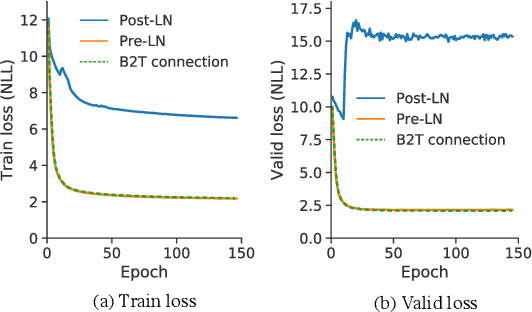
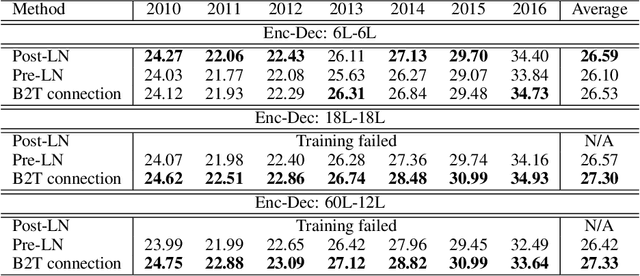
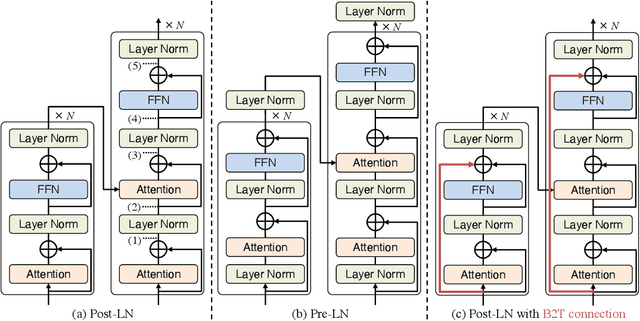
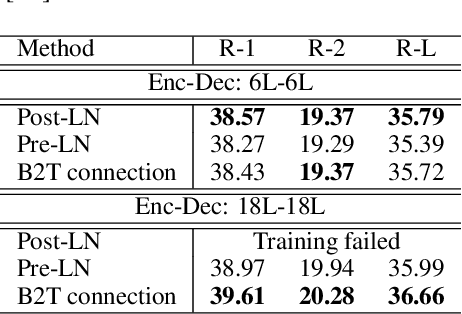
Abstract:In the perspective of a layer normalization (LN) position, the architecture of Transformers can be categorized into two types: Post-LN and Pre-LN. Recent Transformers prefer to select Pre-LN because the training in Post-LN with deep Transformers, e.g., ten or more layers, often becomes unstable, resulting in useless models. However, in contrast, Post-LN has also consistently achieved better performance than Pre-LN in relatively shallow Transformers, e.g., six or fewer layers. This study first investigates the reason for these discrepant observations empirically and theoretically and discovers 1, the LN in Post-LN is the source of the vanishing gradient problem that mainly leads the unstable training whereas Pre-LN prevents it, and 2, Post-LN tends to preserve larger gradient norms in higher layers during the back-propagation that may lead an effective training. Exploiting the new findings, we propose a method that can equip both higher stability and effective training by a simple modification from Post-LN. We conduct experiments on a wide range of text generation tasks and demonstrate that our method outperforms Pre-LN, and stable training regardless of the shallow or deep layer settings.
Decomposing NeRF for Editing via Feature Field Distillation
May 31, 2022



Abstract:Emerging neural radiance fields (NeRF) are a promising scene representation for computer graphics, enabling high-quality 3D reconstruction and novel view synthesis from image observations. However, editing a scene represented by a NeRF is challenging, as the underlying connectionist representations such as MLPs or voxel grids are not object-centric or compositional. In particular, it has been difficult to selectively edit specific regions or objects. In this work, we tackle the problem of semantic scene decomposition of NeRFs to enable query-based local editing of the represented 3D scenes. We propose to distill the knowledge of off-the-shelf, self-supervised 2D image feature extractors such as CLIP-LSeg or DINO into a 3D feature field optimized in parallel to the radiance field. Given a user-specified query of various modalities such as text, an image patch, or a point-and-click selection, 3D feature fields semantically decompose 3D space without the need for re-training and enable us to semantically select and edit regions in the radiance field. Our experiments validate that the distilled feature fields (DFFs) can transfer recent progress in 2D vision and language foundation models to 3D scene representations, enabling convincing 3D segmentation and selective editing of emerging neural graphics representations.
Diverse Lottery Tickets Boost Ensemble from a Single Pretrained Model
May 24, 2022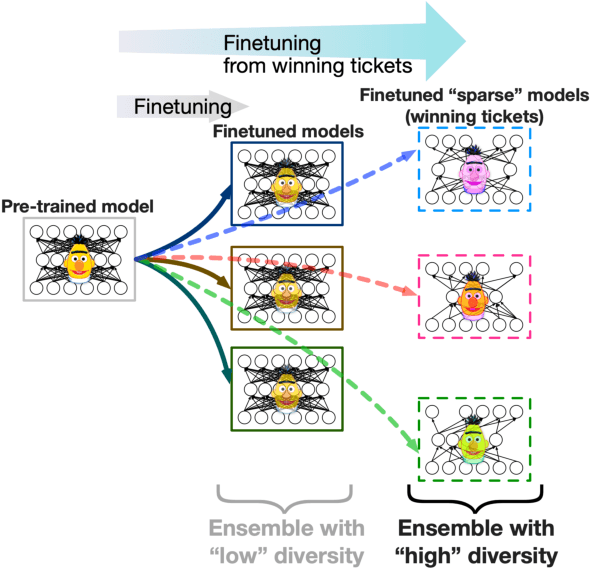
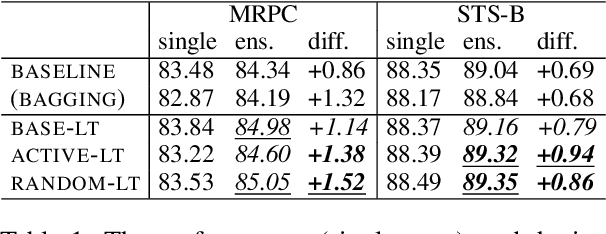
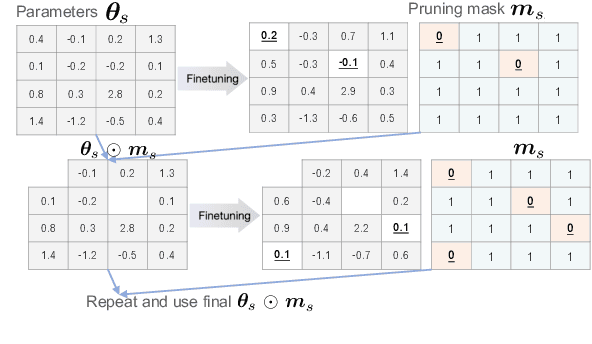

Abstract:Ensembling is a popular method used to improve performance as a last resort. However, ensembling multiple models finetuned from a single pretrained model has been not very effective; this could be due to the lack of diversity among ensemble members. This paper proposes Multi-Ticket Ensemble, which finetunes different subnetworks of a single pretrained model and ensembles them. We empirically demonstrated that winning-ticket subnetworks produced more diverse predictions than dense networks, and their ensemble outperformed the standard ensemble on some tasks.
Instance-Based Neural Dependency Parsing
Sep 28, 2021



Abstract:Interpretable rationales for model predictions are crucial in practical applications. We develop neural models that possess an interpretable inference process for dependency parsing. Our models adopt instance-based inference, where dependency edges are extracted and labeled by comparing them to edges in a training set. The training edges are explicitly used for the predictions; thus, it is easy to grasp the contribution of each edge to the predictions. Our experiments show that our instance-based models achieve competitive accuracy with standard neural models and have the reasonable plausibility of instance-based explanations.
SHAPE: Shifted Absolute Position Embedding for Transformers
Sep 13, 2021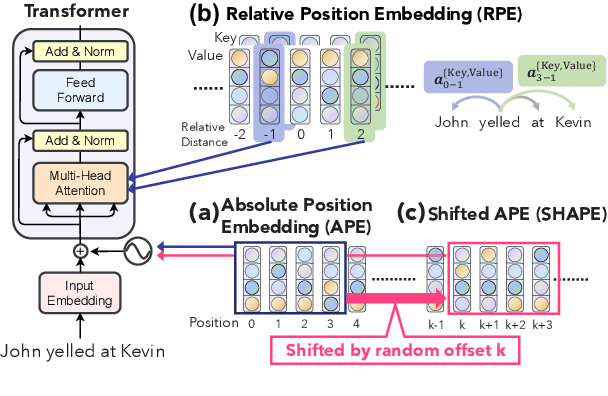

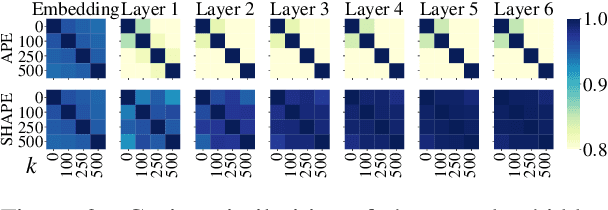
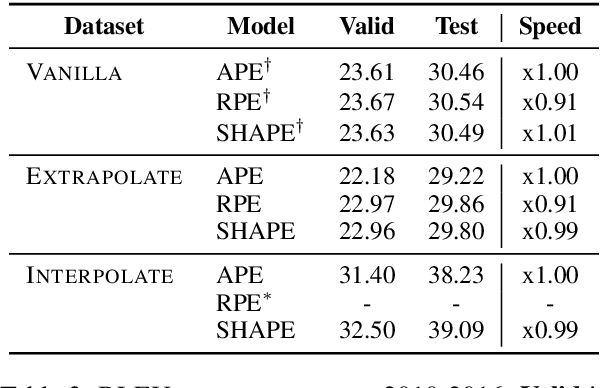
Abstract:Position representation is crucial for building position-aware representations in Transformers. Existing position representations suffer from a lack of generalization to test data with unseen lengths or high computational cost. We investigate shifted absolute position embedding (SHAPE) to address both issues. The basic idea of SHAPE is to achieve shift invariance, which is a key property of recent successful position representations, by randomly shifting absolute positions during training. We demonstrate that SHAPE is empirically comparable to its counterpart while being simpler and faster.
Efficient Estimation of Influence of a Training Instance
Dec 08, 2020



Abstract:Understanding the influence of a training instance on a neural network model leads to improving interpretability. However, it is difficult and inefficient to evaluate the influence, which shows how a model's prediction would be changed if a training instance were not used. In this paper, we propose an efficient method for estimating the influence. Our method is inspired by dropout, which zero-masks a sub-network and prevents the sub-network from learning each training instance. By switching between dropout masks, we can use sub-networks that learned or did not learn each training instance and estimate its influence. Through experiments with BERT and VGGNet on classification datasets, we demonstrate that the proposed method can capture training influences, enhance the interpretability of error predictions, and cleanse the training dataset for improving generalization.
All Word Embeddings from One Embedding
May 25, 2020



Abstract:In neural network-based models for natural language processing (NLP), the largest part of the parameters often consists of word embeddings. Conventional models prepare a large embedding matrix whose size depends on the vocabulary size. Therefore, storing these models in memory and disk storage is costly. In this study, to reduce the total number of parameters, the embeddings for all words are represented by transforming a shared embedding. The proposed method, ALONE (all word embeddings from one), constructs the embedding of a word by modifying the shared embedding with a filter vector, which is word-specific but non-trainable. Then, we input the constructed embedding into a feed-forward neural network to increase its expressiveness. Naively, the filter vectors occupy the same memory size as the conventional embedding matrix, which depends on the vocabulary size. To solve this issue, we also introduce a memory-efficient filter construction approach. We indicate our ALONE can be used as word representation sufficiently through an experiment on the reconstruction of pre-trained word embeddings. In addition, we also conduct experiments on NLP application tasks: machine translation and summarization. We combined ALONE with the current state-of-the-art encoder-decoder model, the Transformer, and achieved comparable scores on WMT 2014 English-to-German translation and DUC 2004 very short summarization with less parameters.
 Add to Chrome
Add to Chrome Add to Firefox
Add to Firefox Add to Edge
Add to Edge